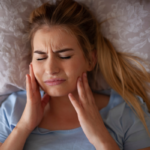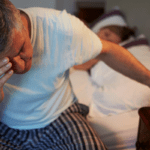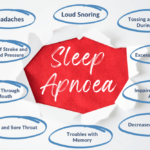For many years patients have been able to trial CPAP before making a purchase. This ensures they will be good candidates for this form of treatment and minimises the financial risk. Until recently, this has not been the case for MAS, as patients had to commit to oral appliance therapy trusting they would achieve successful outcomes.
There are currently a number of methods available for predicting success – each with different degrees of effectiveness. In this article, I will review some of these methods.
Method One – Temporary devices
There are now a number of temporary devices on the market that purport to assess the suitability of a patient for a definitive state-of-the-art oral appliance. These are mostly one size fits all, prefabricated and molded to the patient’s teeth. Newer temporary devices allow for titratability in bringing the mandible forward.
Each of the temporary devices has positive and negative factors that need to be considered before making a choice.
It is important to carefully assess the temporary devices, as a recent study demonstrated that one particular temporary device was 50% less effective than a definitive state-of-the-art oral appliance in reducing snoring1. Despite this result, some of the current temporary anti snoring mouth guards are expected to have improved effectiveness.
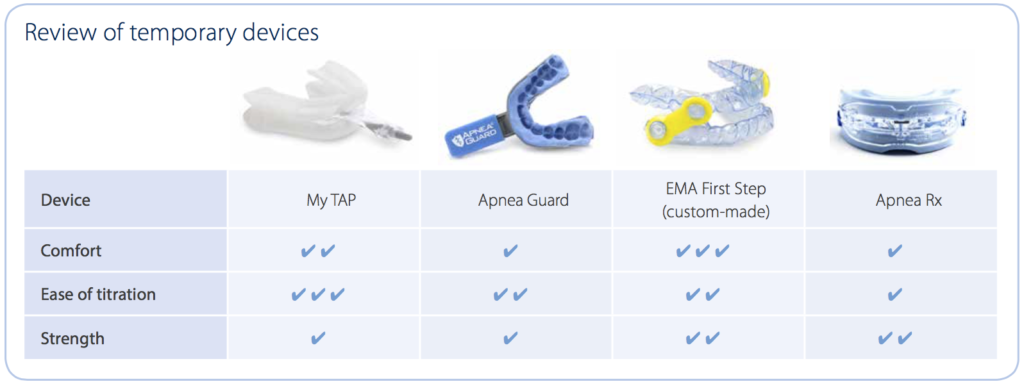
Important considerations for providing a service utilising temporary devices:
A. Allow sufficient time for the initial visit – including a clinical examination and fitting of the temporary device
An assessment needs to be made to establish whether the patient is a suitable candidate for a definitive state-of-the-art oral appliance which includes:
• Oral examination assessing for an adequate number of healthy teeth, presence of dental caries, periodontal health and bone support of the teeth and mucosal pathology,
• Temporomandibular assessment including temporomandibular joints, masticatory musculature, history or presence of a disorder, including clicking, locking and limitation of jaw movements.
• Bruxism and strategies for minimising.
It is important that each patient has an orthopantogram (OPG) radiograph prior to receiving a temporary device as most dental disease cannot be detected with an oral examination alone. This is of particular importance in assessing for periodontal disease with bone loss. Periodontally compromised teeth can be overloaded by the forces from an oral appliance thereby potentially worsening the disease.
SleepWise Clinic allows 45 minutes for the initial visit, which also includes a discussion on side effects, effectiveness and what to expect with oral appliance therapy. This is an integral part of informed consent.

OPG demonstrating severe periodontal disease with generalised bone loss around the teeth.
B. Dealing with side effects and repairs during a trial
• Temporomandibular pain and dysfunction
Approximately 17% of patients develop acute temporomandibular symptoms involving the muscles or the joint. 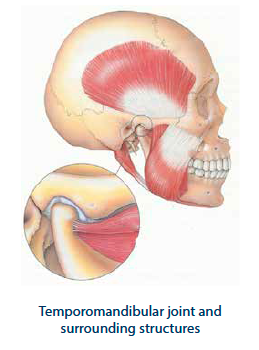
Fortunately for most patients, with appropriate advice and adjustment of the device, the symptoms are transient and the pain subsides rapidly2.
It is important that the practitioner providing the service has training in this area and is able to deal with temporomandibular problems promptly, in order to prevent an acute problem turning into a chronic pain issue, which can more difficult to resolve.
• Repairs and maintenance
Over 30% of patients with OSA have co-existing bruxism that can place considerable forces on a temporary device. As the temporary devices are made from non-robust materials, practitioners will need to factor in repairs to the cracks and fractures that are an inevitable part of providing this service3.
C. Monitoring use of the temporary devices
• The temporary devices are designed for short term use – less than three months. It is important to prevent patients using a temporary device for the longer term given the increased potential for significant side effects, including bite changes.
D. The economics of providing temporary devices
• Temporary devices cost a minimum of $200 to a practitioner and then at least one hour of clinical time needs to be added to include follow up and any potential repairs. The overall cost to the patient could easily exceed $500. On top of this, at the completion of the trial, the patient will need to pay the cost of the definitive state-of-the-art oral appliance.
• A practitioner will need to assess the viability of providing this service, taking into account the costs versus the benefits.
A word of caution
According to Professor Olivier Vanderveken, an ear nose and throat surgeon from Antwerp University who has published widely on oral appliances:
“One should be careful about recommending MAS that show low efficacy and adherence by patients with sleep apnoea seeking non-CPAP treatment, since a negative experience or a poor result can lead to unjustified negative generalisations concerning the effect that can be expected later with a custom-made MAS.”
Method Two – The MATRx
Another device for predicting the possibility of success with an oral appliance is the MATRx – developed by Dr John Remmers from Canada.
The MATRx enables remote titration of the mandible during an in-lab sleep study. This can assess whether mandibular advancement adequately reduces the apnoeic events.
While there is a published study demonstrating validity of the MATRx, many dentists in the field have some concerns with this method. One of the most important predictors of success is the degree of mandibular advancement. While this can vary greatly from patient to patient, with increased flexibility of muscles and ligaments, mandibular advancement can improve by up to 50% over the first three months with the use of obstructive sleep apnea treatment oral appliances.
Professor Fernanda Almeida, in her keynote address at the ASA meeting in 2013, expressed concerns with attempts to predict success over a single night sleep study with the MATRx. She stated that there are many patients who require a more extended time frame to achieve optimal mandibular advancement and certainly this reflects my experience.
Method Three – The Pharyngometer
A number of dentists employ the pharyngometer, which uses sound waves to evaluate the airway, in order to predict effectiveness and optimal mandibular position. There are no published studies demonstrating validity of this instrument and it is not recommended by the American Academy of Dental Sleep Medicine.
Method Four – Trial with a definitive state-of-the-art oral appliance
At SleepWise Clinic, rather than using a temporary device, we offer a trial of therapy using a definitive state-of-the-art oral appliance.
This maximises patient comfort and the likelihood of success.
If the patient, or the referring physician, for any reason, is not satisfied with the results, a refund of 80% of the fee is applicable. This places MAS on a par with CPAP whereby the patient can trial the latest technology with a greatly reduced financial outlay and risk.
We have been offering the trial for over 12 months and can report that 94% of patients elect to continue with oral appliance therapy for the longer term.
Advantages of the SleepWise Trial
1. Utilisation of a definitive state-of-the-art oral appliance, instead of a temporary device, which maximises the chance of success.
2. The patient saves all the extra costs involved with a temporary device.
3. Reduced side-effects and increased comfort by using a definitive state-of-the-art oral appliance. 
Do you require a demonstration model with a current MAS for patient education?
Please call or email SleepWise Clinic if you would like a complementary demonstration model with any of the current designs of MAS.
by Dr Harry Ball
Clinical Director
SleepWise Clinic
References:
1. Comparison of a custom-made and a thermoplastic oral appliance for the treatment of mild sleep apnoea.
Vanderveken OM et al
Am J Respir Crit Care Med. 2008 Jul 15;178(2):197-202.
2. “The incidence and prevalence of temporomandibular disorders… in patients receiving mandibular advancement device therapy for obstructive sleep apnoea”
Cristina V. Perez & Reny de Leeuw & Jeffrey P. Okeson & Charles R. Carlson & Hsin-Fang Li & Heather M. Bush & Donald A. Falace
Sleep Breath April 2012.
3. Five Years of Sleep Apnoea Treatment with a Mandibular Advancement Device –Side Effects and Technical Complications”
Jordi Martínez-Gomis a, Eva Willaert a, Lluis Nogues a, Maribel Pascual a, Maria Somoza b, and Carmen Monasterio c
The Angle Orthodontist 83:4, 653-658 2010.


